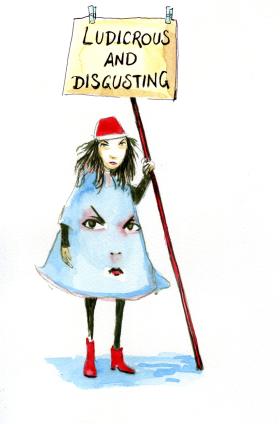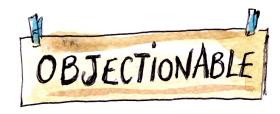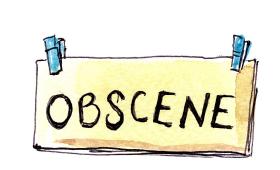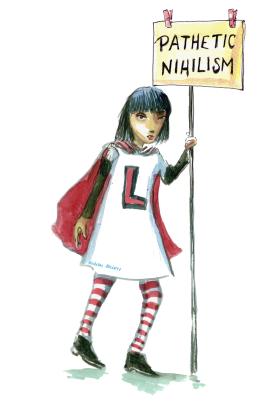
The robust and breezy Labor senator in charge of censorship in Australia was of a similar mind about the book, but was unable to act under federal law. So he told the woman to approach the man responsible for censorship in New South Wales, where the book had been published. The state’s chief secretary referred the complaint to the crown solicitor, who handed the matter to police. A few weeks later, an officer of the vice squad served a summons on Angus & Robertson to answer a charge of publishing an obscene work.
At issue was We Were the Rats, a novel that centres on a group of Australian soldiers taking part in the heroic defence of the Libyan port of Tobruk in 1941. It was the work of military journalist Lawson Glassop, who had been so inspired by reports of the siege that he waylaid weary diggers on leave in Cairo to pump them for colour and information.
Much of the early part of the novel was ‘based on fact’, said Glassop, and his characters were ‘real people’, faithfully portrayed. Moreover, the book was an act of service, of homage: ‘The Australian infantryman is a great soldier and I have tried to make this book his saga.’ Good sales were accompanied by widespread critical acclaim when the novel was published in October 1944. Responding to criticism of several ribald passages, Glassop leaned heavily on his assertion of the novel’s verisimilitude: ‘If people are offended their argument is with the men of the AIF, not with me.’
But the authorities’ argument was with his publishers, who were brought to court a year and a half later, in April 1946, to answer the charge. At issue, according to detective-sergeant Roy Munro, were five passages that were offensive ‘to delicacy and chastity’. The most critical concerned a scene in which a soldier reads aloud from a ‘perv novel’ — that is, erotica — to shivers of outrage and horror from his peers: ‘Oh Jesus,’ groans one. Says another: ‘I hope that’s the end.’
That Angus & Robertson was being prosecuted for the dirtiness of a passage depicting horrified reactions to erotica was but one example of the farce that followed. Another was the merciless cross-examination of Munro by a defence counsel probing the police sergeant’s ability to judge literature. Did Munro know Shakespeare’s first name? No. Did he know who Byron was? Did he know of Chaucer, or Shelley? Did he even know what ‘pornographic’ meant?
Much as this underscored the defence’s case that the police were philistines, it did nothing to sway the magistrate’s mind as to the obscenity of the passages cited. Angus & Robertson was found guilty and fined £10. At the appeal in June, both prosecutor and judge agreed that the novel attained ‘great heights in literary art’ and was true to life. But again a guilty verdict was inescapable: the passages with the erotica were obscene and would corrupt anyone whose mind was open to immoral influences. ‘I think these pages are plain lth,’ said the judge, ‘obscene in fact and in law.’
Glassop clung to his claim to truth and railed against the ‘imbecility’ of these findings. What was truly lamentable was the fact that the laws that netted We Were the Rats were amended by state parliament just a month before Angus & Robertson’s conviction. The new exemption for ‘literary works’ came too late to save Glassop’s novel.
In Tasmania, meanwhile, the original complainant had not budged an inch from her view that teenagers had to be protected from the kind of material contained in We Were the Rats. ‘I am not a prude, and do not mind calling a spade a spade,’ she said. ‘I know all about sex, and I think all people should know all about it — but this is beyond belief.’

The same might be said, at a distance of some 50 years, of Australia’s censorship system: that it was beyond belief. ‘That ever so many books could have been put on any one list, and people told that they were not to read them,’ author Peter Cowan would say, ‘seems to be like something out of science fiction.’
And yet for many years it was a fact of life in Australia. Books published in this country were subject to a thicket of state-based regulations and laws that could have them banned, seized and burned; books published overseas were subject to federal laws that could prevent their import on grounds that ranged from obscenity to sedition to blasphemy.
Proponents of the system saw themselves as the guardians of the Australian character and moral standards, which they thought to be threatened by the literature produced by realists, naturalists, modernists, communists, anarchists, pacifists and pornographers. Long-dead Frenchmen and Italians were equally worrying: editions of Boccaccio’s Decameron and Rabelais’ Heroic Deeds of Gargantua and Pantagruel were banned in the 1920s. The nightmares of censors were varied but all centred on a new nation, uniquely vulnerable to threats foreign and domestic, which had to be protected.
But while censorship had enjoyed considerable public support in the early twentieth century, by the 1940s it was also becoming an object of derision and scorn. Opponents saw it as a dead hand stifling new ideas, dampening debates, and making the country culturally sterile and conservative. Successive cases weakened support for censorship and emboldened those opponents.
Censorship of the press during the Second World War led newspaper proprietors to a successful action against the Commonwealth in the High Court in 1944. The prosecution of We Were the Rats came hard on the heels of the farcical prosecution of Max Harris, in South Australia, for publishing the spoof poems of ‘Ern Malley’. It would be followed by the outrageously heavy-handed prosecution and temporary imprisonment of Victorian writer Robert Close, author of the novel Love Me Sailor: ‘A man who writes a book such as he has,’ said the responsible judge, ‘cannot complain about being sent to jail.’
The chill such cases caused was severe. Most writers and publishers erred on the side of caution and largely steered away from contentious topics or material that might lead to a prosecution or the suppression of a work.
But the censors were always searching for new threats, and in the 1950s they found them in the proliferation of cheaply produced American-style comic books, pulp novels, and magazines for adolescents. In Queensland, in 1954, the Literature Board of Review decided to ban a swag of such magazines on grounds that titles Real Love, Romance Story, Real Romances, Darling Romance, Popular Romance and New Romances were all ‘objectionable’ for their intended audience of teenage women.
Appeals to the Queensland Supreme Court were fruitless, in no small part thanks to a matron from a Salvation Army girls’ home who testified that the young women in her care would be ‘excited’ and their rehabilitation ‘retarded’ should they read the magazines and their tales of young love. But High Court justices Dixon, Kitto and Taylor, who considered the matter on appeal in 1956, reacted with some astonishment when they opened these magazines and began to read.
Having listened to arguments about the flagrant obscenity and indecency of the titles, they found that their actual character ‘proved quite unexpected’. The stories, while perhaps colourful, were nonetheless chaste and the illustrations were unprovocative. ‘The theme of them all nearly is love, courtship, and marriage. Virtue never falters and right triumphs. Matrimony is the proper end and if you are not told that happiness ensues it is the constant assumption.’ While judging, acerbically, that the magazines were an affront to the reader’s intelligence, the High Court ruled that they could not be deemed a ‘real threat’ to the reader’s morals — and overturned the ban. There was no need, in this case, to protect anyone.

A compilation of matter-of-fact advice for teenagers about topics including sex, drugs, alcohol and identity, this slim, pocket-sized book was the catalyst for a storm of controversy around the world. It was banned in the UK and Italy, denounced by Pope Paul VI, and caused its Greek publisher to be imprisoned.
Attracting particular ire was its assertion of the importance of choice, autonomy and responsibility: ‘You are a person in your own right. In the end you’re accountable only to yourself for your own actions. You don’t have to play the part given you by your teachers and parents. You’ve got ideas of your own and usually know what you want.’
Scandalised parents and self- appointed moral guardians declared the book would ruin Australia’s young, pollute the country’s morality, encourage anarchism and anti-authoritarian behaviour, and thereby make the country ripe for an attack: ‘There must be joy- bells ringing in the Kremlin tonight,’ wrote one member of the public.
The upset and criticism were so significant that a decision on whether the book could be banned went to federal cabinet. Customs minister Don Chipp, who had begun to liberalise the censorship system since his appointment in 1969, bluntly told his colleagues in April 1972 to face reality: there were no grounds in law for a ban, which would be ineffective anyway since The Little Red Schoolbook was already in the community.
Colleagues grumbled unhappily at this. One minister said the book was ‘dangerous’; another that it was ‘ludicrous and disgusting’; Malcolm Fraser said it would ‘undermine family and society’. Lamenting the ‘pathetic nihilism’ of the world that had allowed such a book to be created, the Queensland Literature Board of Review stepped in where the Commonwealth had hung back and banned the book.
But this was a gesture without force or meaning. As Chipp had said, the practical point was that the book was already circulating in Australia. Activists — including members of the Queensland branch of the Communist Party of Australia — were distributing copies to schoolchildren, making a mockery
of attempts to suppress the book.

While this dramatic change saw the end of most literary censorship, though, it did not end of censorship altogether. Powers to censor remained, and instances of censorship and attempted suppression across literary works, movies, art and computer games have been regular in the nigh-on 50 years since, always invoked with talk of protection.
How Australia balances that desire to protect with the freedom to think, judge and speak for oneself is still at issue. The task is never ending. As the authors of The Little Red Schoolbook once wrote: ‘Think things out for yourself and base your judgement on what you really believe.’
Dr Patrick Mullins is the author of Tiberius with a Telephone (2018), which won the Douglas Stewart Prize of the NSW Premier’s Literary Awards and the National Biography Award. His most recent book is The Trials of Portnoy (2020).
This story appears in Openbook autumn 2021.
